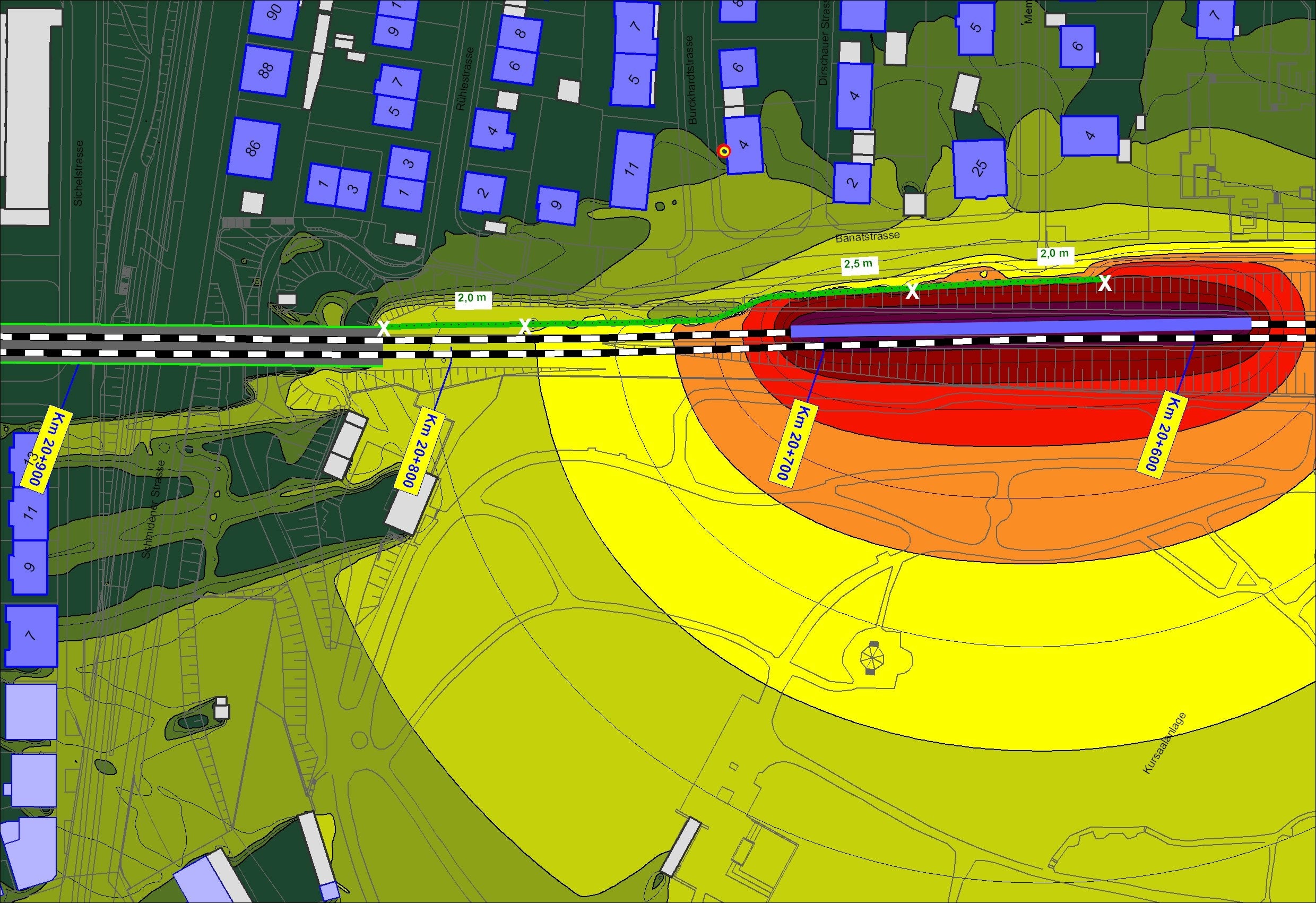
Increasing freight and passenger traffic has caused a surge in noise emissions. Trains often produce noise when entering or leaving stations and tunnels which poses health risks for those living and working in the vicinity.
Given that being exposed to noise above 85 decibels (dB(A)) for a continuous period can put one at the risk of permanent hearing damage according to Centres for Disease Control and Prevention, there are a number of international standards and regulations in place which require rail companies to control the noise generated for the safety of workers and those in the vicinity.

Discover B2B Marketing That Performs
Combine business intelligence and editorial excellence to reach engaged professionals across 36 leading media platforms.
In Europe, for example, a framework called Common Noise Assessment Methods in Europe for strategic noise mapping has been introduced in accordance with the Environmental Noise Directive which requires strategic noise maps to be created for main rail lines and EU-wide carriageways.
While there are a number of mitigation measures available that can be applied to railway tracks, the effectiveness of these measures can differ as it often involves a large degree of uncertainty due to factors such as disturbances in surroundings.
To tackle this issue, German company SoundPLAN GmBH have created a software called SoundPLAN which is in accordance with all international standards and is used to identify the cause, location and propagation of sound. Based on these calculations railway companies can then assess the best options to reduce excessive noise.
Managing director of SoundPLAN GmBH Jochen Schaal puts it in simple words: “The core of our business is the prediction of noise in the environment.”

US Tariffs are shifting - will you react or anticipate?
Don’t let policy changes catch you off guard. Stay proactive with real-time data and expert analysis.
By GlobalDataHow does the technology map noise?
The software works by collating information based on types of rail and rolling stock, as well as frequency, size and speed. The mapping software then produces graphical representations of the noise using colours to depict the different levels. This enables laypeople as well as scientists and engineers to read the reports.
Schaal says that SoundPLAN’s railway noise mapping module consists of two parts – emission and propagation calculation. “Information relating to the number of trains, type and length, speed, and details of the rail surfaces are fed into a calculation that determines the emission level,” he says.
He adds that should conditions change in traffic speed, volume or surface type and the noise is accentuated, “a new emission value is computed”.
Reliability allows for more careful planning
Schaal says that by leveraging the software to calculate noise propagation, rail companies can focus on the practical part of noise planning, present the software-generated calculation and research to municipalities, environmental administrations and government bodies who can then plan mitigation processes.
Schaal adds that SoundPLAN’s noise maps are more reliable than manual measurements as it can automatically identify individual sources of noise emissions in a location and the direction the noise is travelling.
In addition, the software-generated maps include animation features that can predict the progress of a train along its route and identify the noisiest areas which might be influenced by topography and obstacles such as cuttings, embankments, tunnels and noise protection walls.
“Mapping software can not only show the most cost-effective measures, but it can also help with risk assessments, to show where a company should focus its attention,” Schaal declares.
Having debuted in 1986, the software solution was developed by an interdisciplinary team consisting of engineers, geographers, physicists and computer science specialists, he says.
Calculating noise levels for the Eisenbahn-Bundesamt
According to the EU environmental noise regulations, Germany’s Federal Railway Authority the Eisenbahn-Bundesamt (EBA), is required to create noise maps for German railway lines every five years.
The EBA has now completed the third round of noise mapping for all urban areas with more than 100,000 residents and for main lines with over 30,000 trains per year.
Schaal details that for the project, SoundPLAN calculated the results based on a database which forms the basis for the sound propagation calculations, and automatically created isophones, along with required statistics, for each municipality.
Following the completion of all the calculations, the results, in the form of nationwide grid noise maps, facade noise maps and various tables, were prepared for the final publication and on-schedule delivery to the EBA.
An almost impossible, but worthwhile job
While noise mitigation is essential, Schaal declares that attempting to cut noise from railways “may seem like an impossible job – or a vastly expensive one at best.”
However, he adds that using the technology can help companies as well as governments across the globe to control emissions as well as calculate the costs involved. “By using the software it is possible to assess the cost of each and every noise reduction initiative before the project even begins.
“This means it is possible to work out how much it would cost to raise a noise barrier by an extra metre and how that would affect nearby premises. It may show that’s it’s cheaper to retrofit property than build a high barrier,” Schaal concludes.



